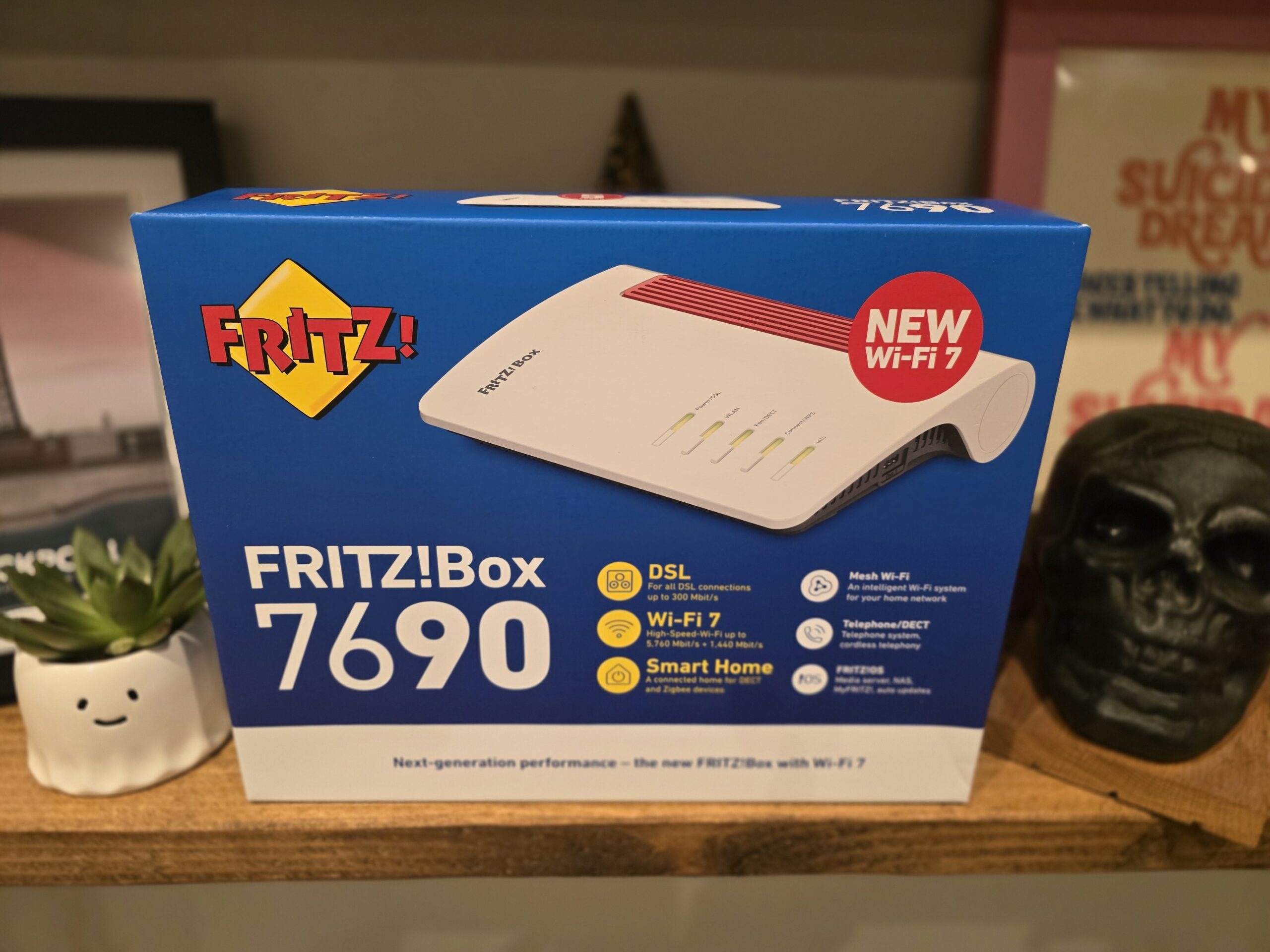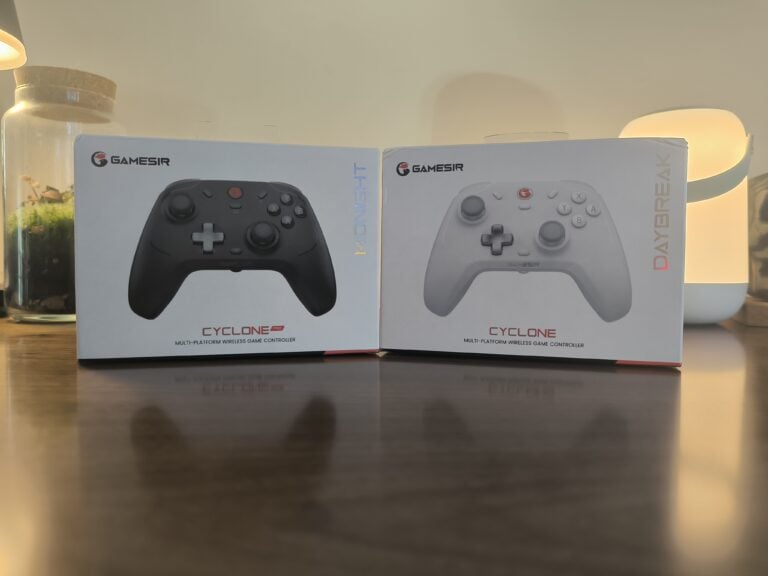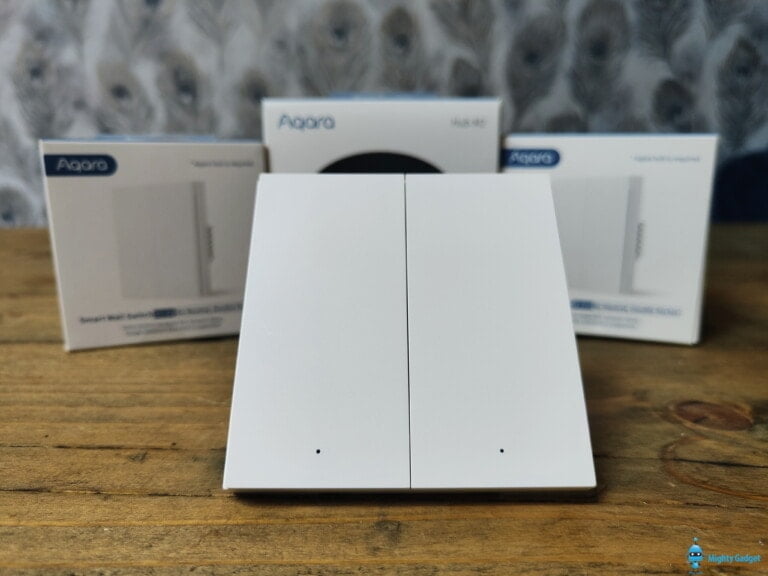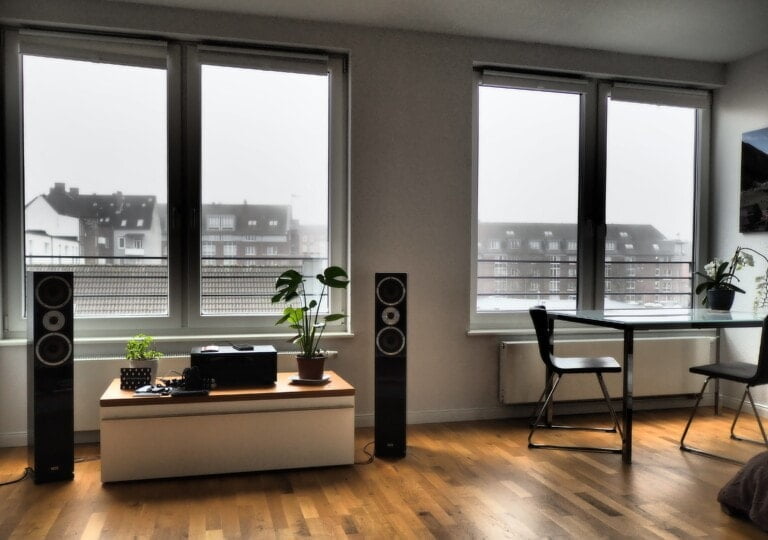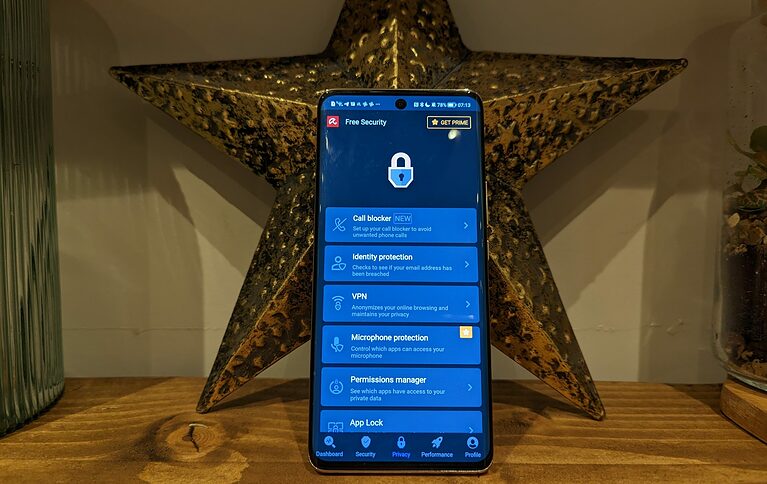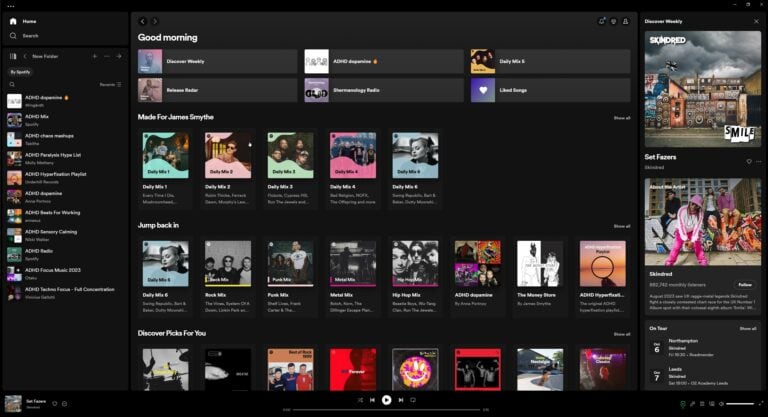Any links to online stores should be assumed to be affiliates. The company or PR agency provides all or most review samples. They have no control over my content, and I provide my honest opinion.
The FRITZ!Box 7690 is AVM’s latest DSL router, bringing Wi-Fi 7 technology to the forefront of home networking. This new model builds upon the success of its predecessor, the FRITZ!Box 7590 AX, by incorporating advanced features such as Wi-Fi 7, Zigbee smart home integration, and enhanced DECT capabilities.
While the model number would indicate, this is the flagship product, the FRITZ!Box 5690 Pro is technically a superior router due to its tri-band Wi-Fi 7. The FRITZ!Box 5690 Pro supports both Fiber and DSL, whereas the 7690 is DSL.
Related Reviews
- FRITZ!Repeater 3000 AX Review
- AVM FRITZ!Box 7590 AX Review
- FRITZ!Repeater 6000 Review
- FRITZ!Box 4060 WiFi 6 Router Review
- FRITZ!Box 7530 AX Review
Specification
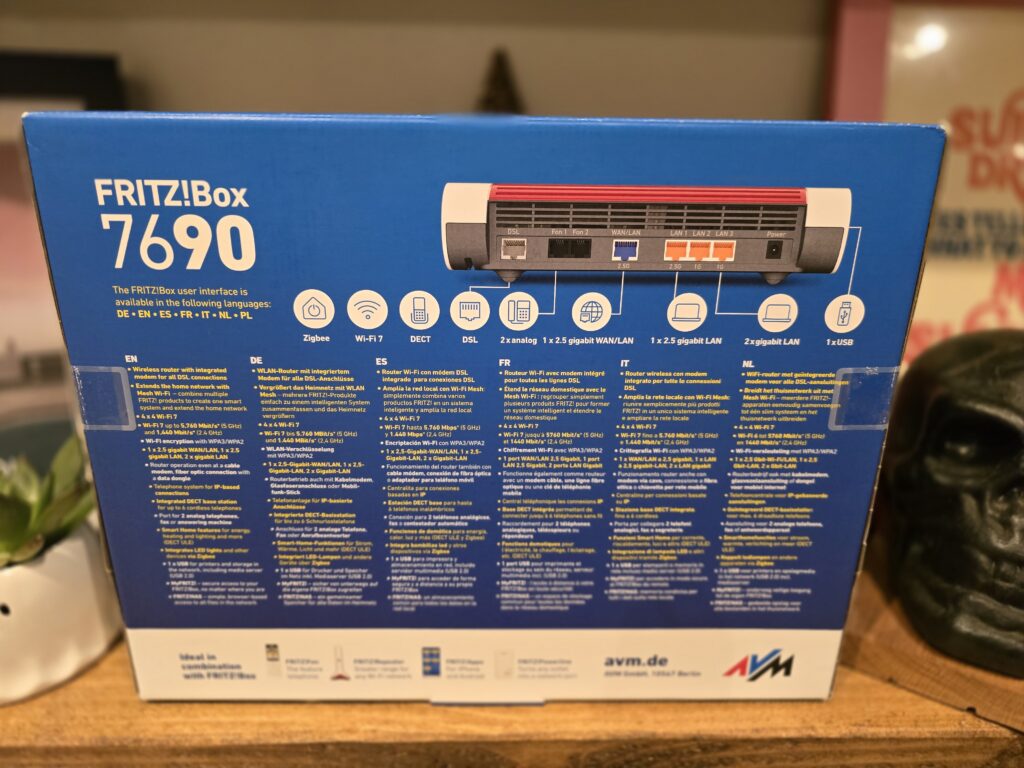
| Category | Specification |
| Interfaces | – 1 x DSL connection (VDSL including supervectoring and ADSL2+) |
| – 1 x 2.5 Gigabit WAN/LAN port (IEEE 802.3bz, NBASE-T) | |
| – 1 x 2.5 Gigabit LAN port (IEEE 802.3bz, NBASE-T) | |
| – 2 x Gigabit LAN (10/100/1000BASE-T) | |
| – Wi-Fi 7 on 2.4 GHz and 5 GHz | |
| – 1 x USB 2.0 port | |
| – DECT base station (up to 6 handsets) | |
| – 2 x a/b ports (RJ11) for analog phones, answering machines, and fax | |
| DSL/Network | – Integrated modem for DSL connections |
| – Supports VDSL (up to 300 Mbps, including supervectoring) and ADSL2+ | |
| – Compatible with Deutsche Telekom Annex-J lines | |
| – Router operation via cable modem, fiber optic, or 3G data dongle | |
| – Stateful Packet Inspection Firewall, NAT, DHCP server, DynDNS client, UPnP AV | |
| – Supports IPv6 | |
| – Secure remote access with VPN (WireGuard, IPSec) | |
| – Parental controls and youth protection module | |
| – Wake on LAN and dimmable LEDs | |
| Wi-Fi | – 4×4 Wi-Fi 7 (5760 Mbps on 5 GHz, 1376 Mbps on 2.4 GHz) |
| – Compatible with IEEE 802.11a/g/n/ac/ax/be standards | |
| – Mesh Wi-Fi support | |
| – WPA3/WPA2 encryption | |
| – WPS, guest access, Wi-Fi auto channel, and eco mode | |
| Telephony | – Telephone system for All-IP connections |
| – DECT base for up to 6 cordless phones | |
| – 2 x a/b ports for analog phones, fax, and answering machines | |
| – Supports HD telephony | |
| – Five answering machines with voicemail-to-email | |
| – Internet telephony (SIP-compliant) | |
| – FRITZ!App Fon for smartphone integration | |
| Smart Home/Media | – Smart Home features (energy, heating, lighting) |
| – Supports 50 Smart Home devices (DECT ULE) and 40 Zigbee devices | |
| – Media server (DLNA/UPnP AV), FRITZ!NAS for file sharing | |
| – MyFRITZ! for secure remote access | |
| FRITZ!OS | – Browser-based interface (“fritz.box”), optimized for mobile devices |
| – Handy FRITZ!Apps for convenience | |
| – Push notifications and security updates | |
| Package Contents | – FRITZ!Box 7690 |
| – Power supply, 4-meter DSL cable, 1.5-meter LAN cable | |
| – TAE/RJ11 adapter, Quick Guide | |
| Device Properties | – Dimensions: 254 x 63 x 191 mm |
| – Power consumption: 12–13 W | |
| Warranty | – 5-year manufacturer’s warranty |
Features
Network Connectivity
Connection Flexibility
The router supports various IP-based DSL connections, including ADSL2+ and VDSL with supervectoring technology. It can be integrated with fibre optic or cable modems and existing wireless networks. The device also supports mobile broadband via 4G/3G dongles.
High-Speed Performance
The router utilises VDSL 35b supervectoring technology to achieve speeds up to 300 Mbit/s. A 2.5 gigabit WAN port enables connection to fibre optic modems or can function as a LAN interface alongside additional ports (1x 2.5 Gbit/s and 2x 1 Gbit/s) for networked devices.
Remote Access and Security
Remote Management
The MyFRITZ! service enables secure remote access to the router from any location worldwide. Users can access stored files, review call histories and manage voicemail messages. A dedicated mobile application provides remote access via smartphones and tablets.
Security Features
The router implements comprehensive security measures, including:
- WireGuard protocol and IPSec standard for VPN connections
- Preconfigured firewall protection
- Network filtering capabilities
- Encrypted DECT and Wi-Fi communications
- Parental controls
- Separate guest network access
Internet Protocol Support
The router supports both IPv4 and IPv6 protocols, ensuring compatibility with current and future internet technologies.
Wireless Networking
Mesh Capabilities
The router can form a mesh network when combined with compatible repeaters and powerline adapters, allowing for expanded network coverage tailored to specific requirements.
Wi-Fi 7 Technology
Implementation of Wi-Fi 7 provides enhanced wireless performance with reduced latency and improved interference management.
Advanced Wi-Fi Management
- Guest network functionality with customisable welcome pages
- Wireless environment monitoring with channel optimisation
- Automatic band steering between 2.4 GHz and 5 GHz frequencies
- WPS (Wi-Fi Protected Setup) for simplified device connections
- Individual network keys for main and guest networks
Telephony Features
Connection Options
The router supports multiple telephone types:
- Analogue telephones
- IP telephones
- Fax machines
- DECT handsets (up to six devices)
Communication Services
- Built-in answering machine with email forwarding
- Contact synchronisation with Google services
- Integrated fax functionality with PDF email delivery
- HD voice calling capability
- Call management features including blocking, diversions and routing rules
Smart Home Integration
Device Management
The router functions as a smart home hub, supporting:
- Energy management
- Heating control
- Lighting systems
- Zigbee device integration
- Automation capabilities via schedules and routines
Media Management
An integrated media server manages connected USB storage devices, enabling network-wide access to multimedia content including music, photographs and videos.
System Management
Operating System
The router utilises FRITZ!OS, featuring an intuitive browser-based interface with guided setup wizards and comprehensive documentation.
Unboxing / Design
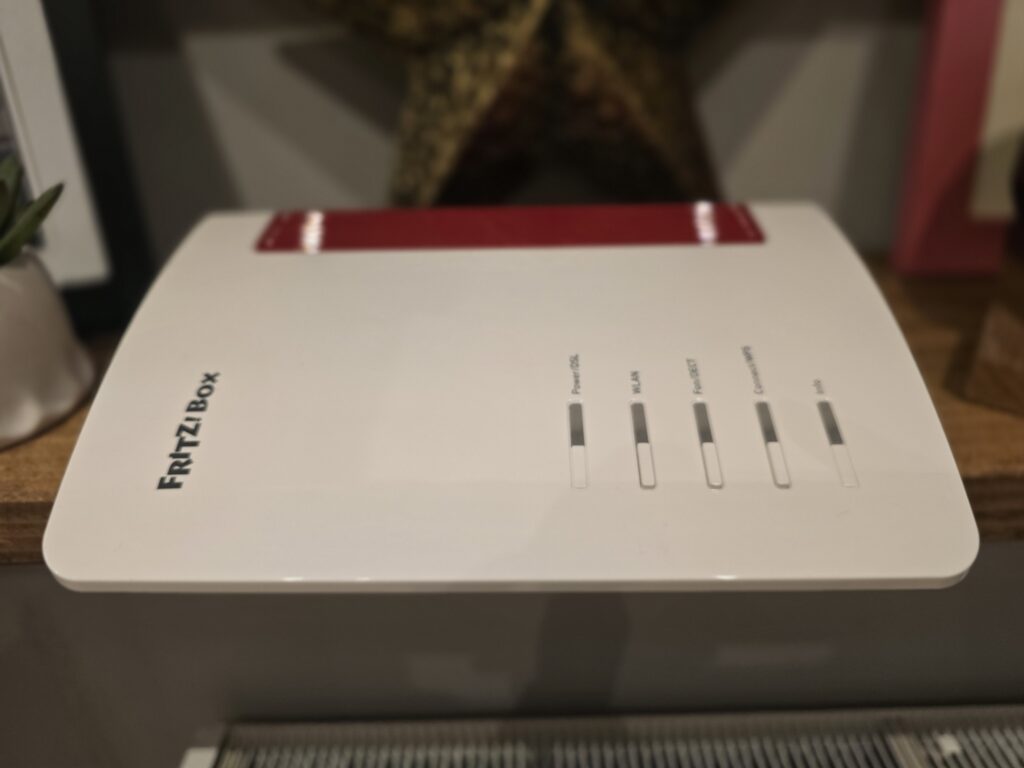
The FRITZ!Box 7690 maintains the familiar design language of previous AVM routers, featuring a white and red colour scheme. While it is not the most attractive design, you always know it’s a FRITZ!Box when you see one.
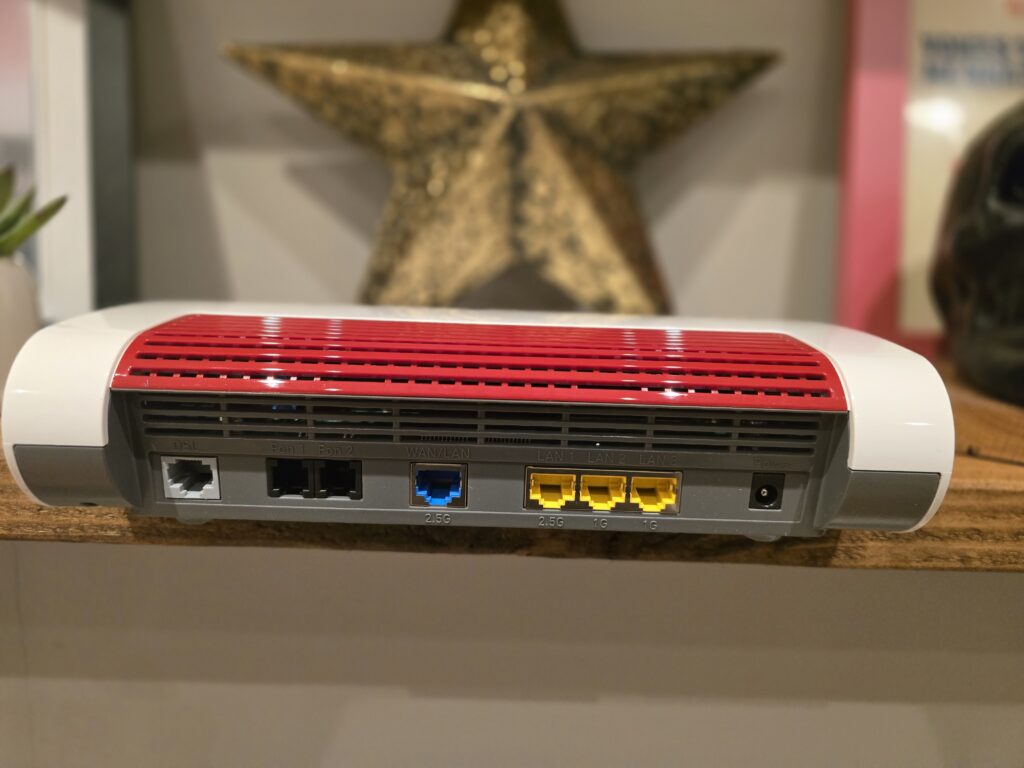
The router’s dimensions of 254 × 63 × 191 mm make it compact enough to fit comfortably on a desk or shelf without taking up too much space.
Upon unboxing, users will find:
- The FRITZ!Box 7690 router
- A power supply
- A 4-meter DSL cable
- A 1.5-meter LAN cable
- A TAE/RJ11 adapter
- A Quick Guide
The router’s front panel features LED indicators for power, DSL, Wi-Fi, phone, and system status, providing at-a-glance information about the device’s operation. The back panel houses the majority of the router’s ports, including:
- DSL port
- 2 x 2.5 Gigabit Ethernet ports (1 WAN/LAN, 1 LAN)
- 2 x Gigabit Ethernet ports
- 2 x analogue phone ports
- Power connector
On the side, users will find a USB 2.0 port and an additional analogue phone port.
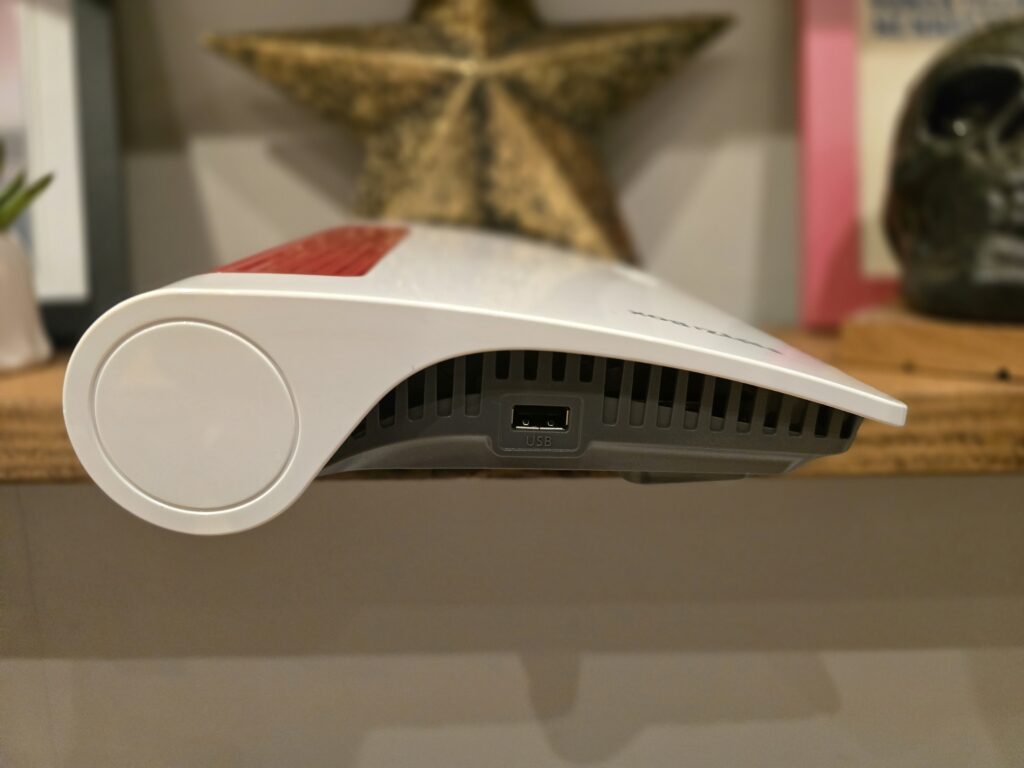
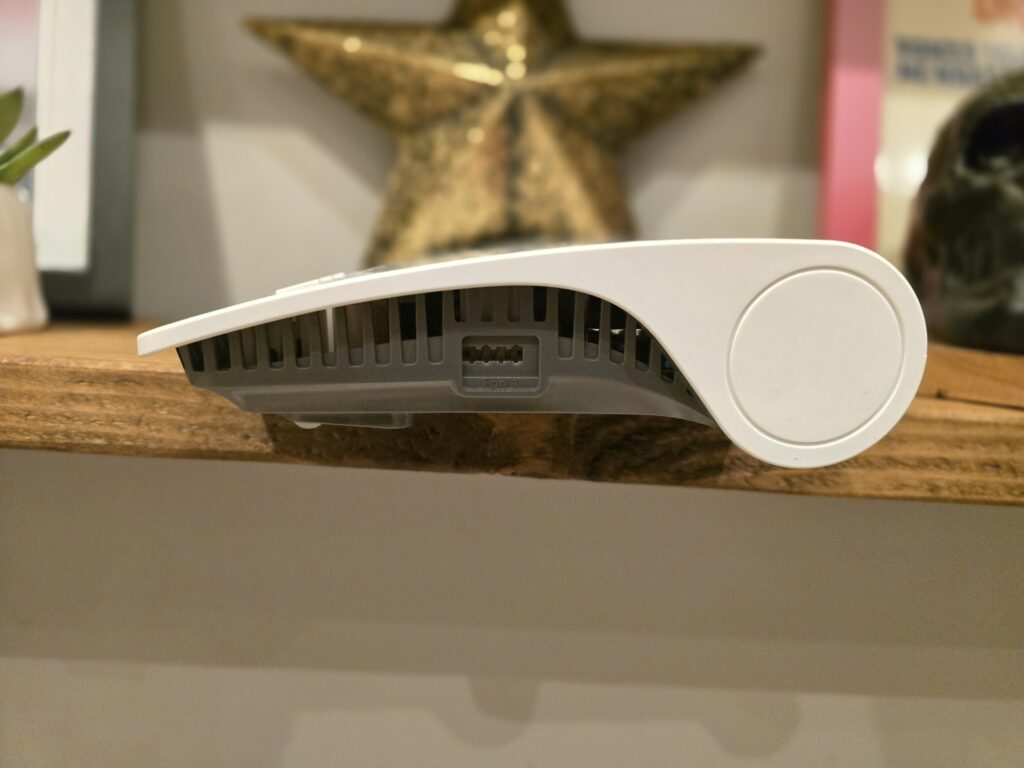
Set Up
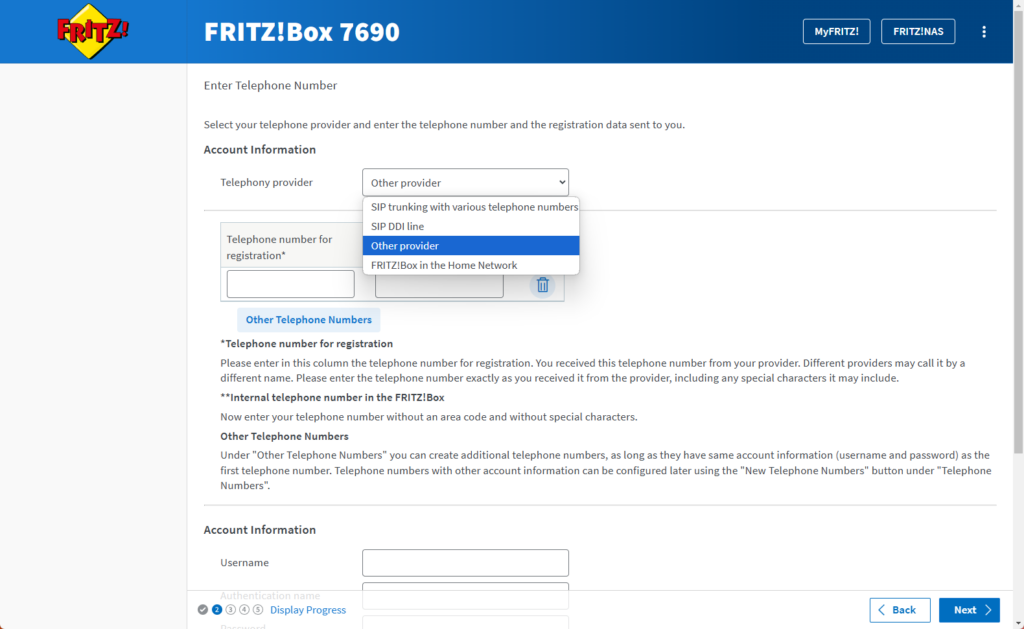
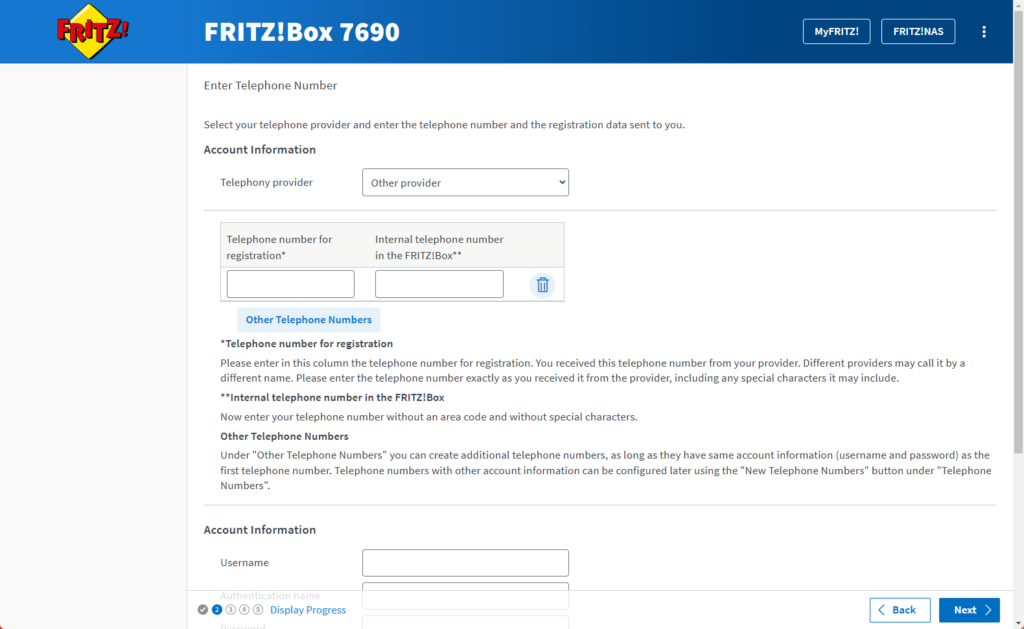
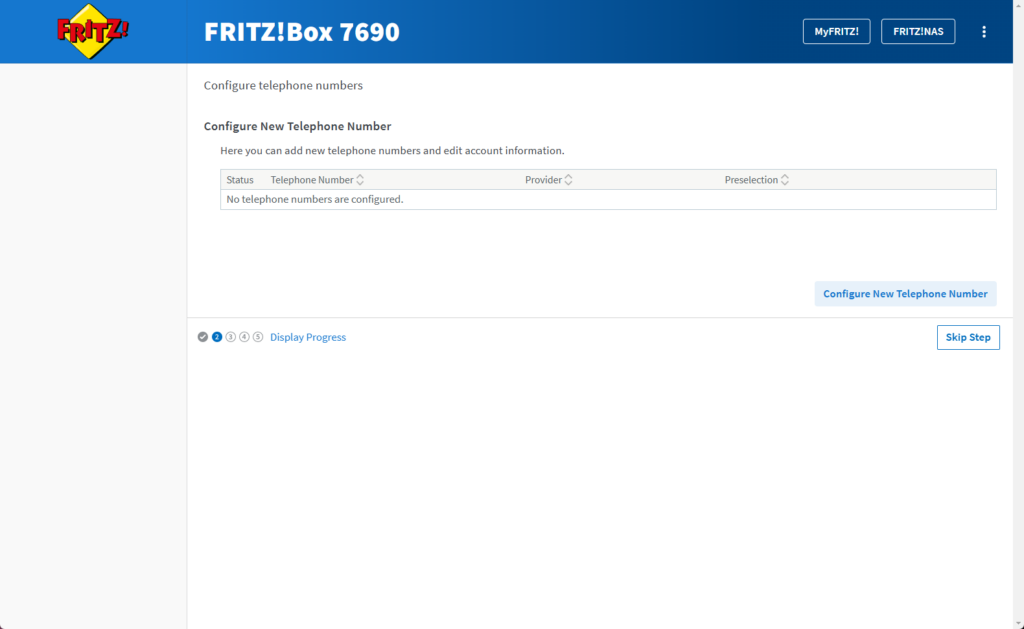
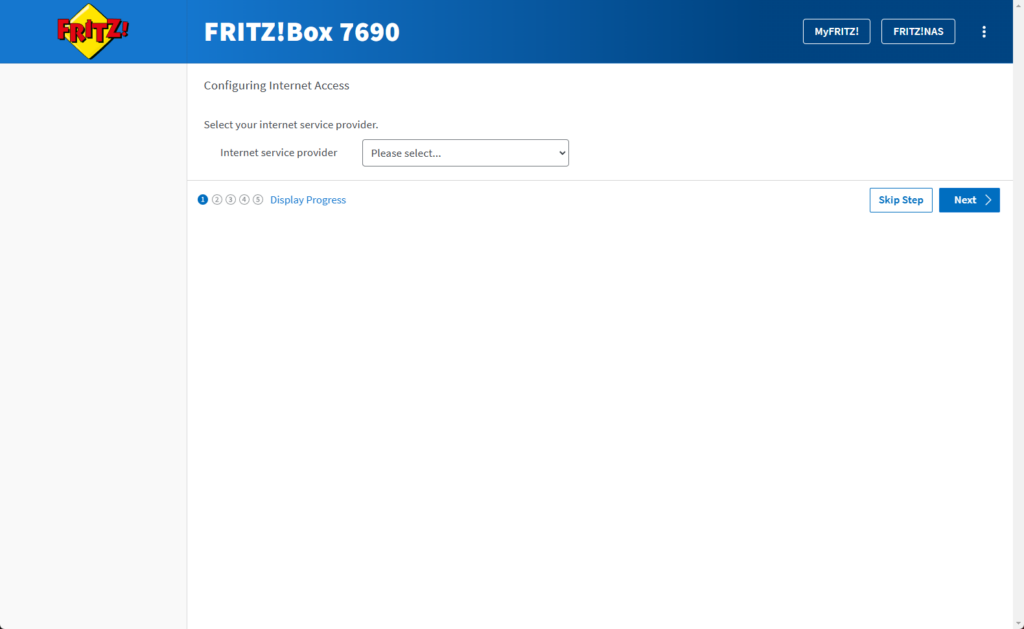
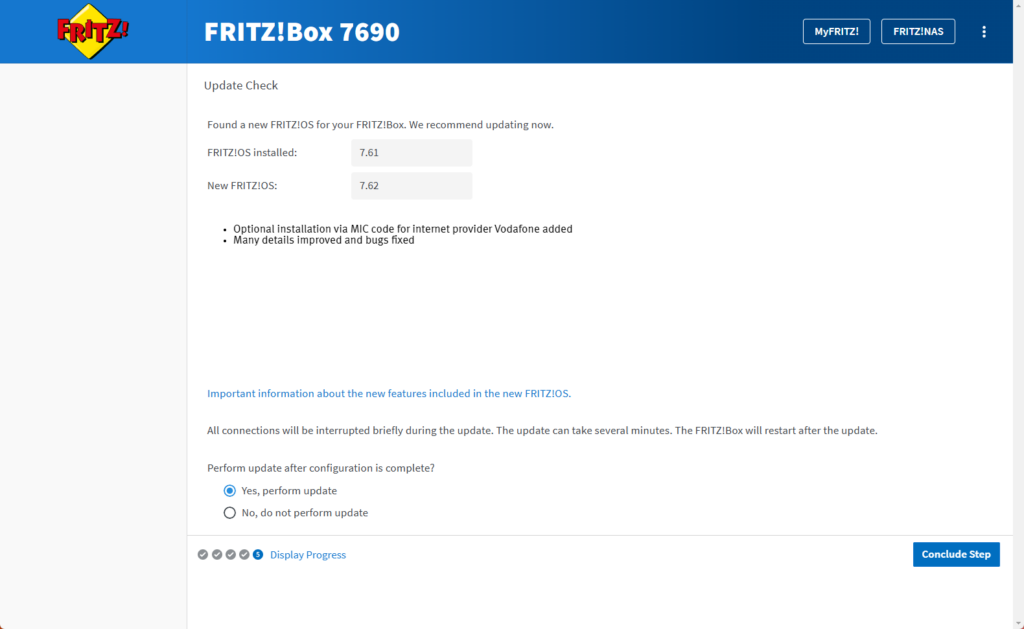
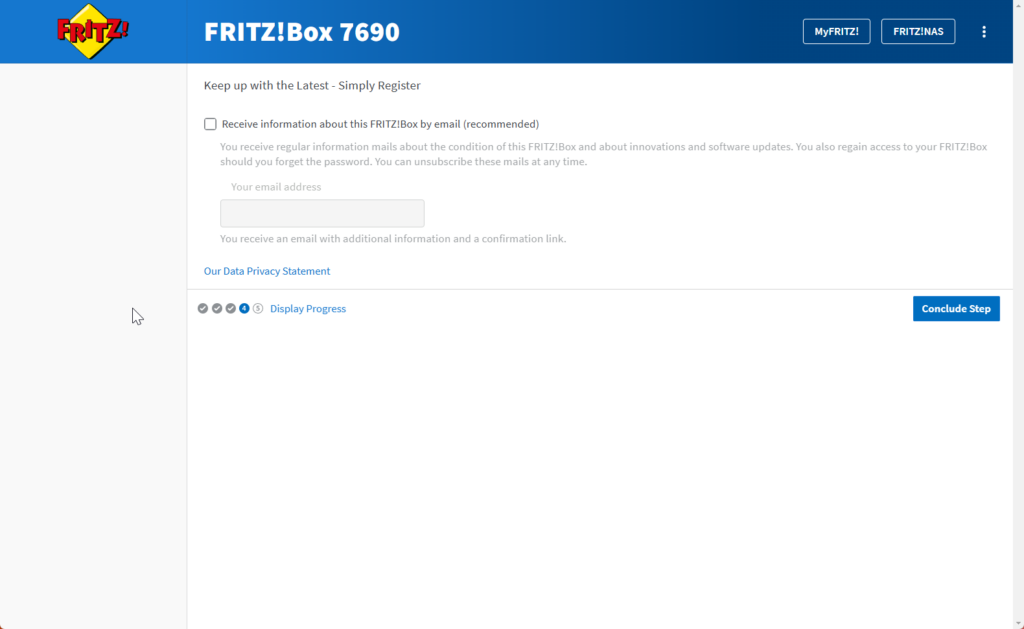
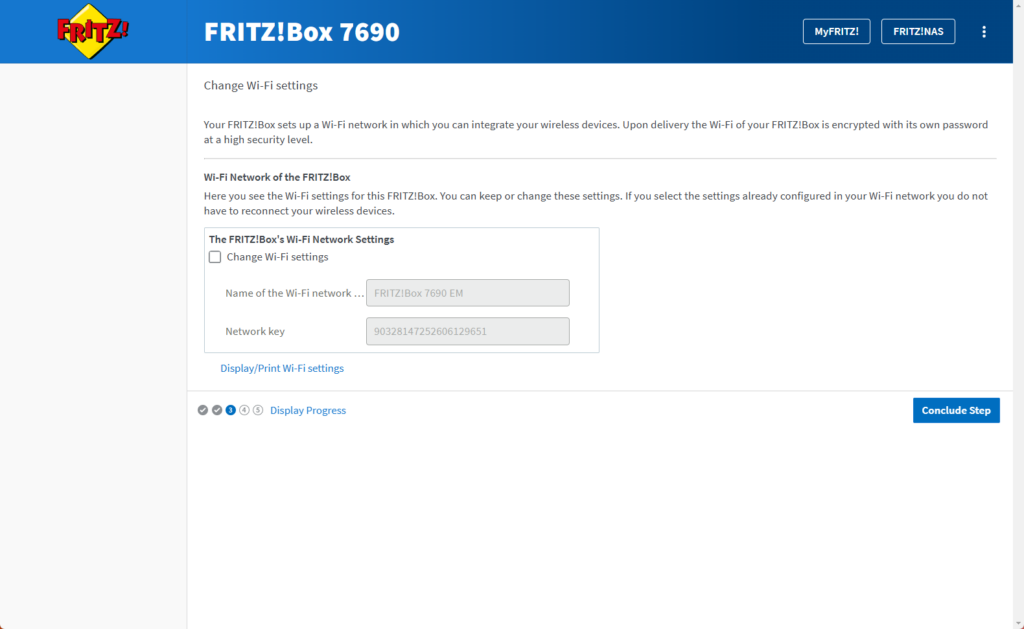
Setting up the FRITZ!Box 7690 is a straightforward process, thanks to AVM’s user-friendly approach. The included Quick Guide provides clear, step-by-step instructions for connecting the router to your DSL line and powering it on.
As I am on Virgin Media, I connected the router with the WAN port and my Virgin Media hub in modem mode.
Once connected, users can access the router’s web interface by typing “http://fritz.box” into a web browser or the IP of the router. The setup wizard guides users through the initial configuration, including:
- Selecting your internet service provider
- Entering your DSL credentials (if required)
- Setting up Wi-Fi networks (main and guest)
- Configuring basic security settings
For users upgrading from a previous FRITZ!Box model, AVM has made the process even simpler. The router supports importing settings from an older model, allowing for a nearly seamless transition. This feature includes transferring Wi-Fi settings, phone numbers, and other configurations.
The setup process also includes options for configuring the router’s smart home features, DECT base station, and any additional services you wish to use.
Overall, the setup process is user-friendly and should take most users no more than 15-20 minutes to complete.
FRITZ!OS GUI
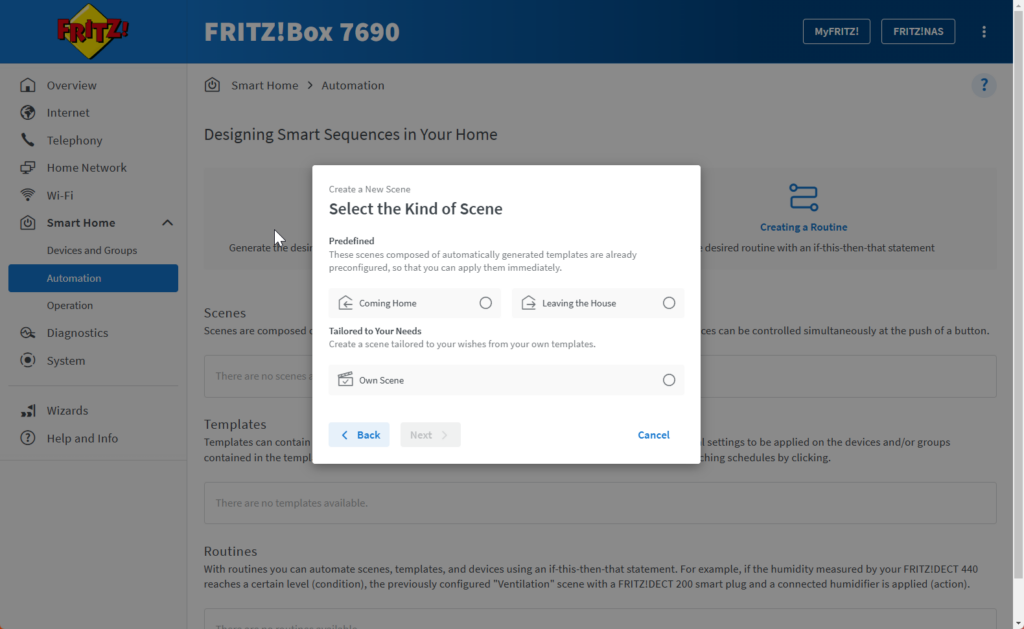
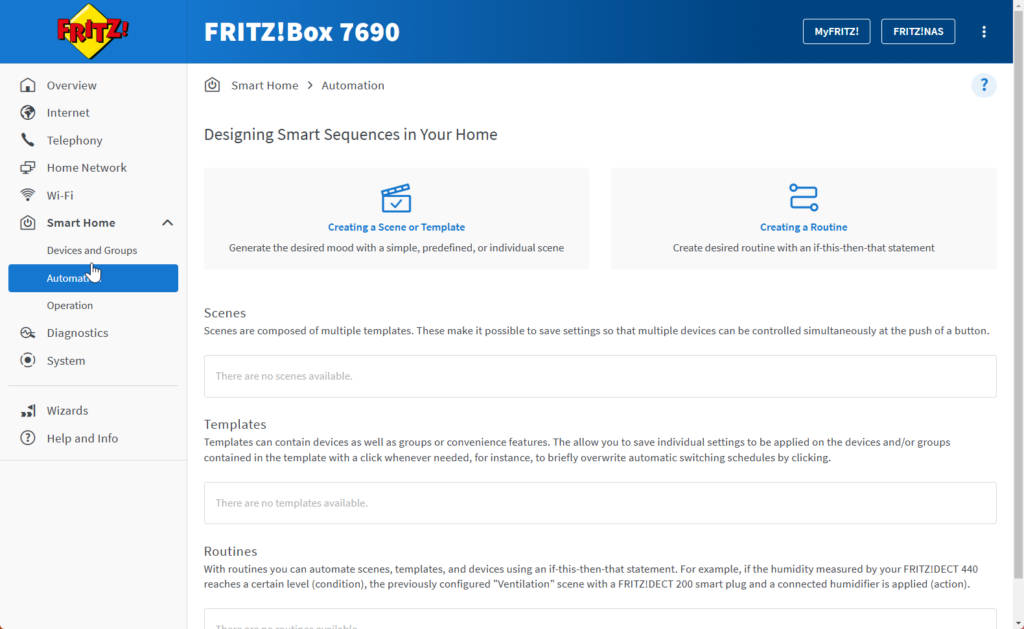
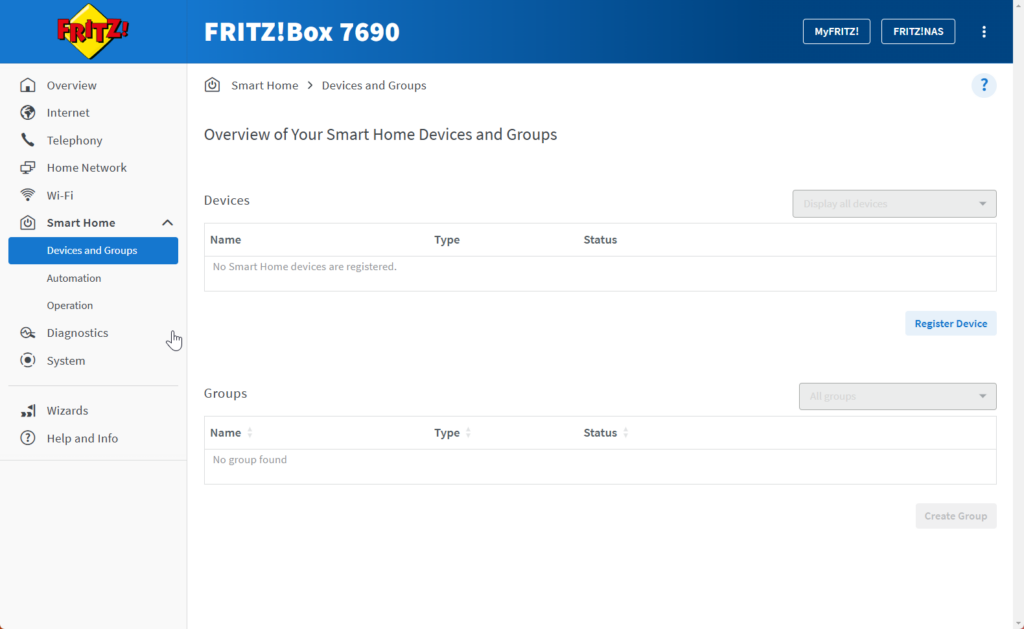
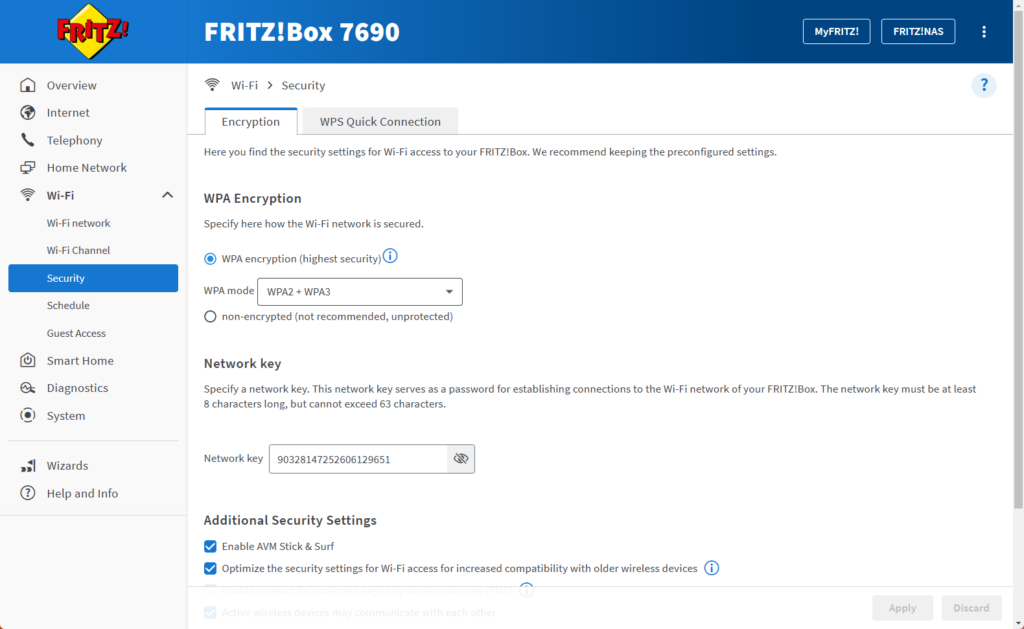
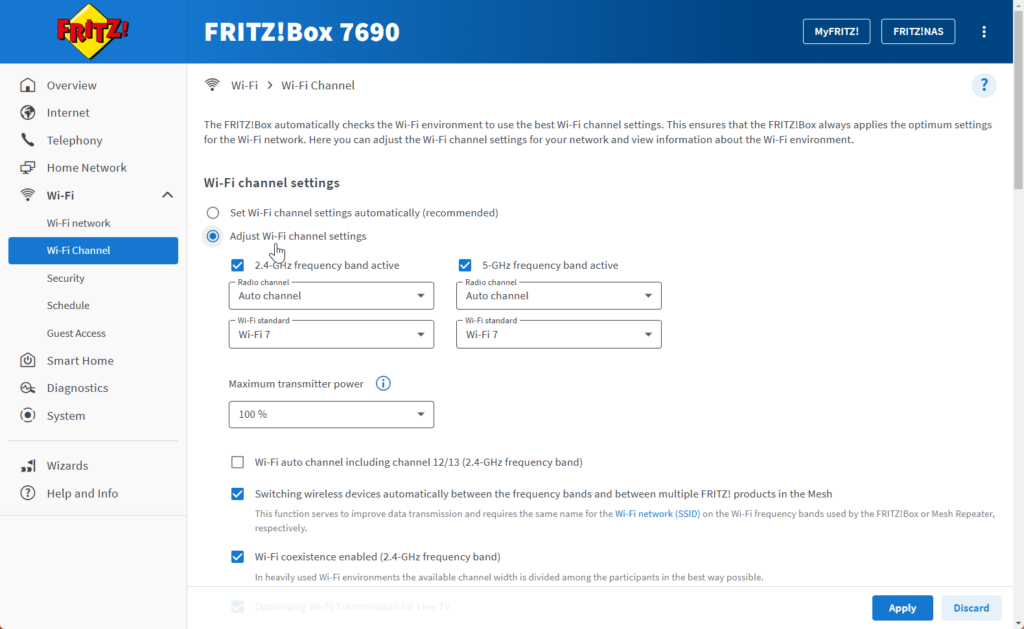
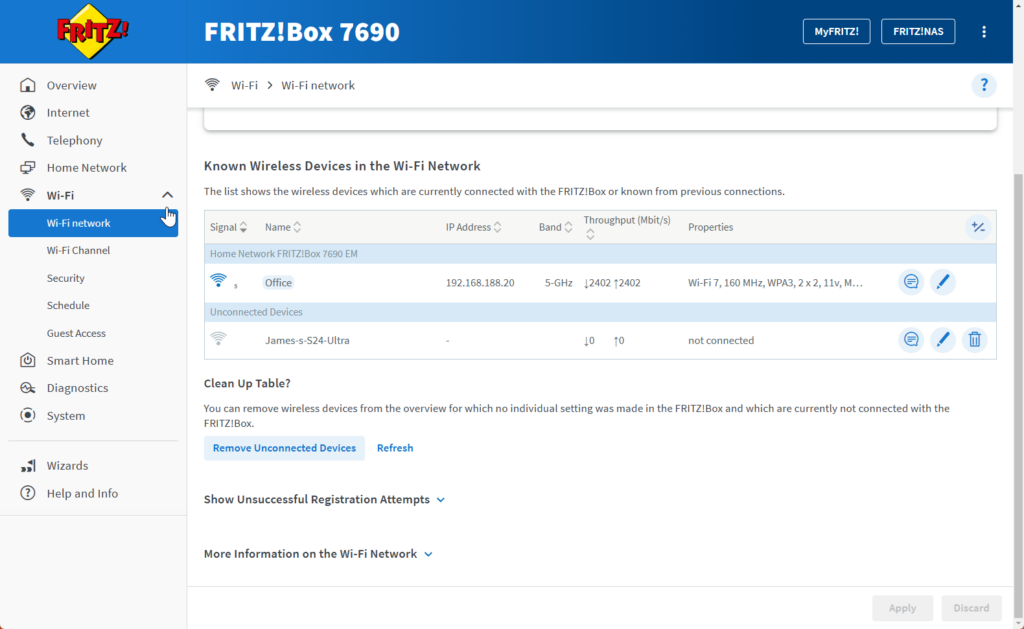
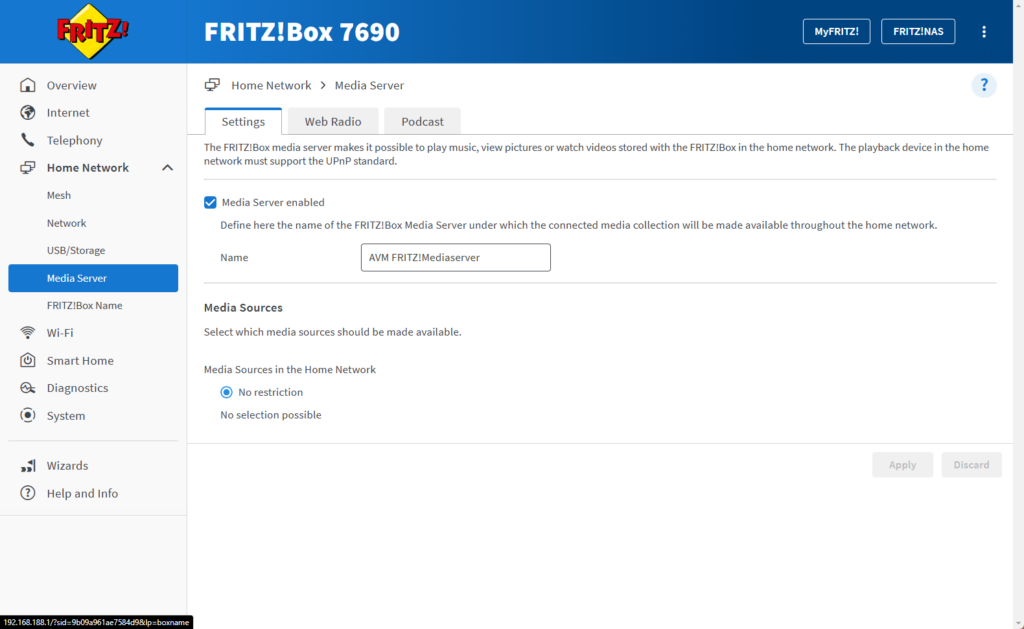
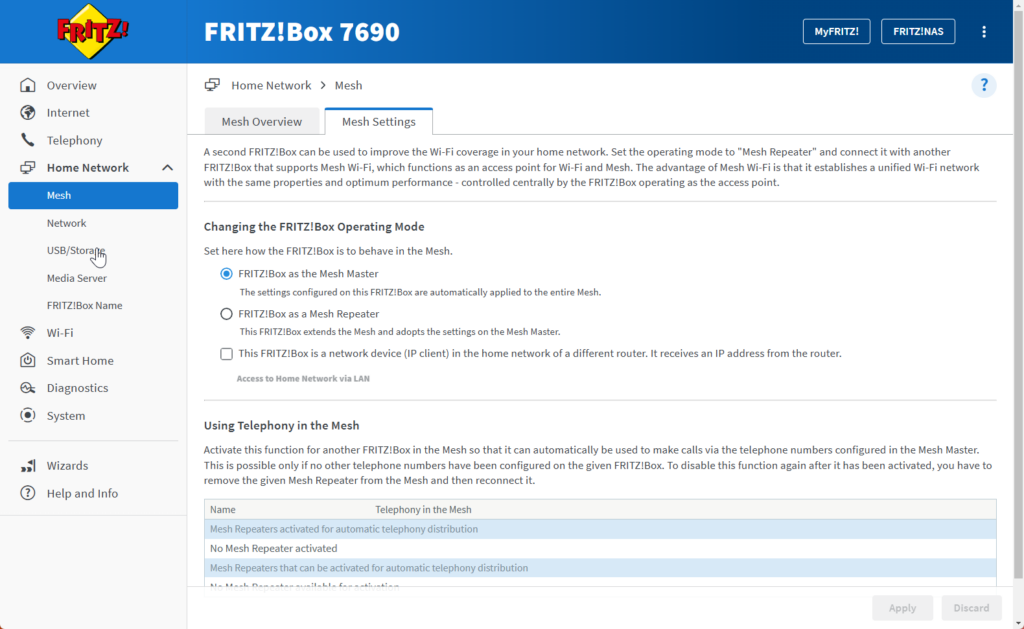
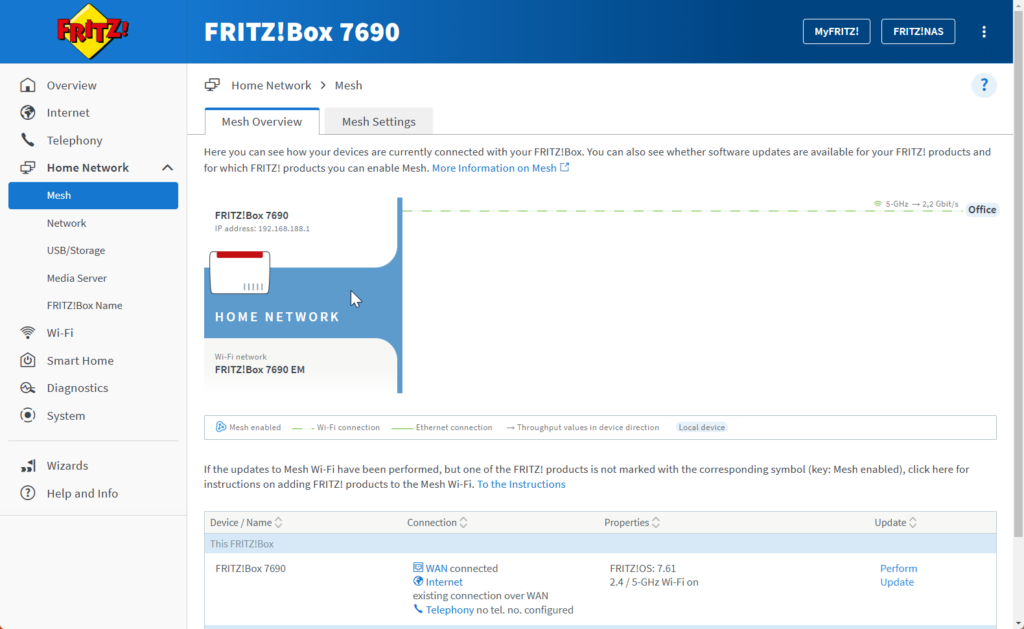
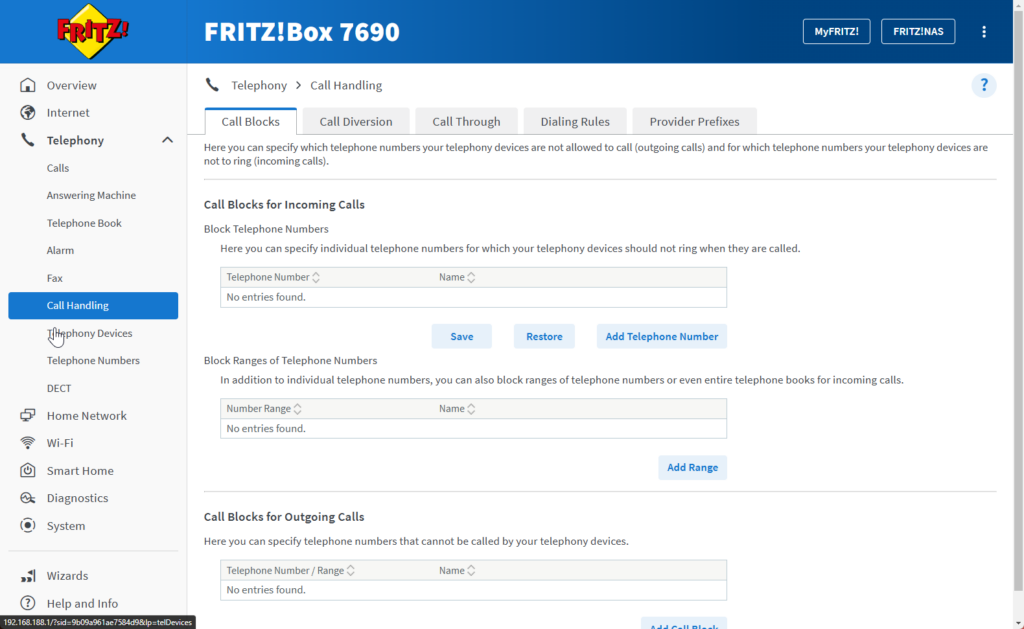
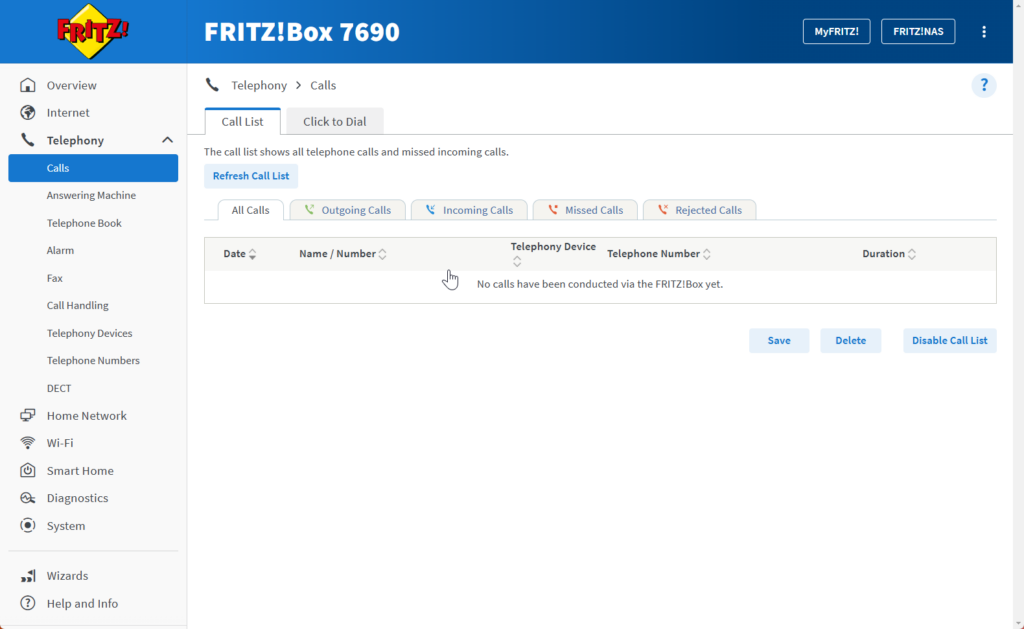
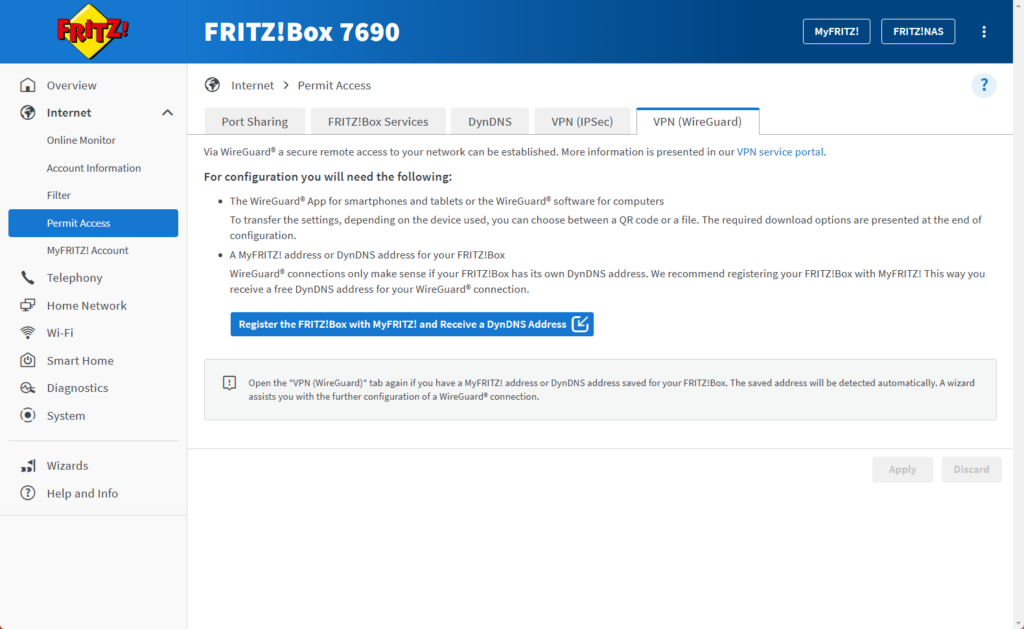
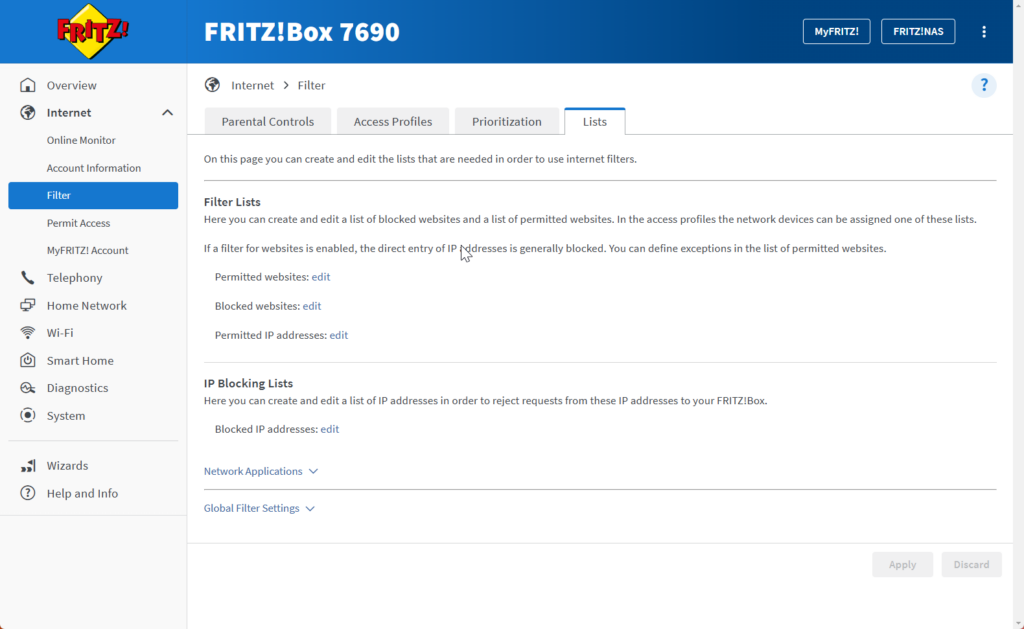
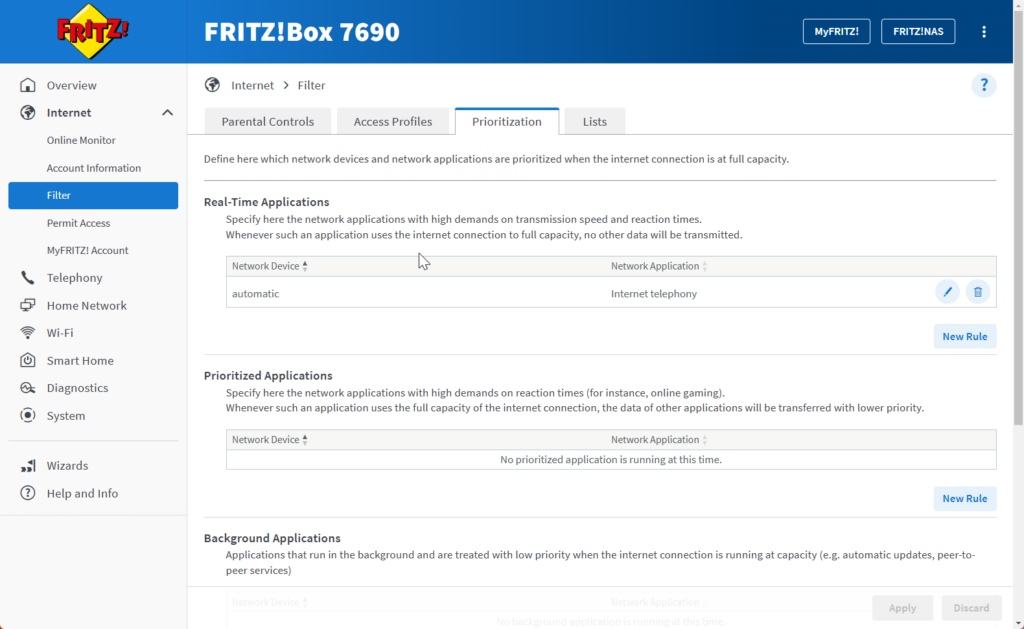
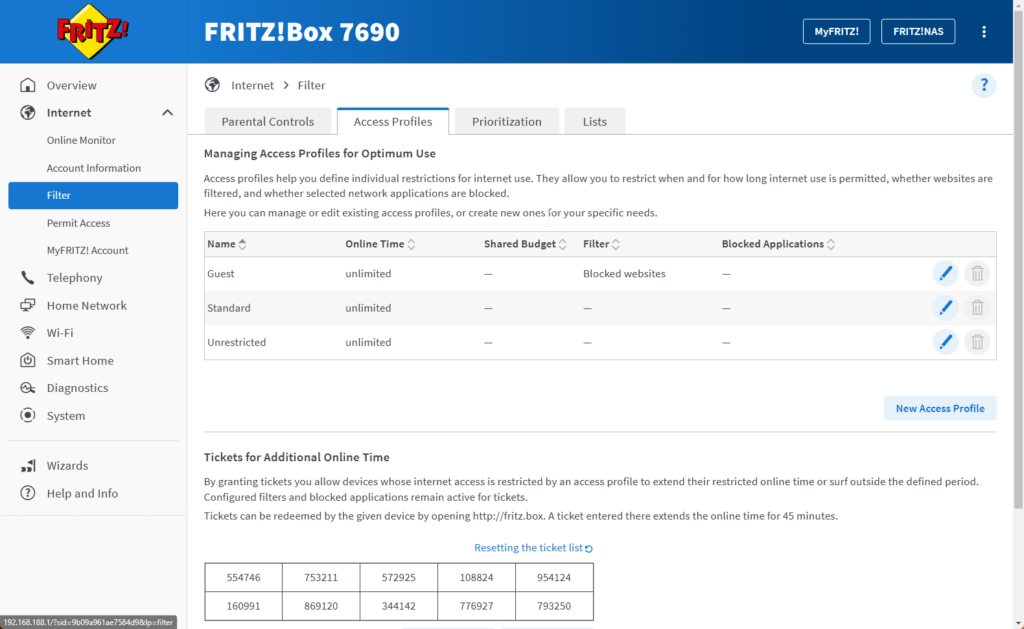
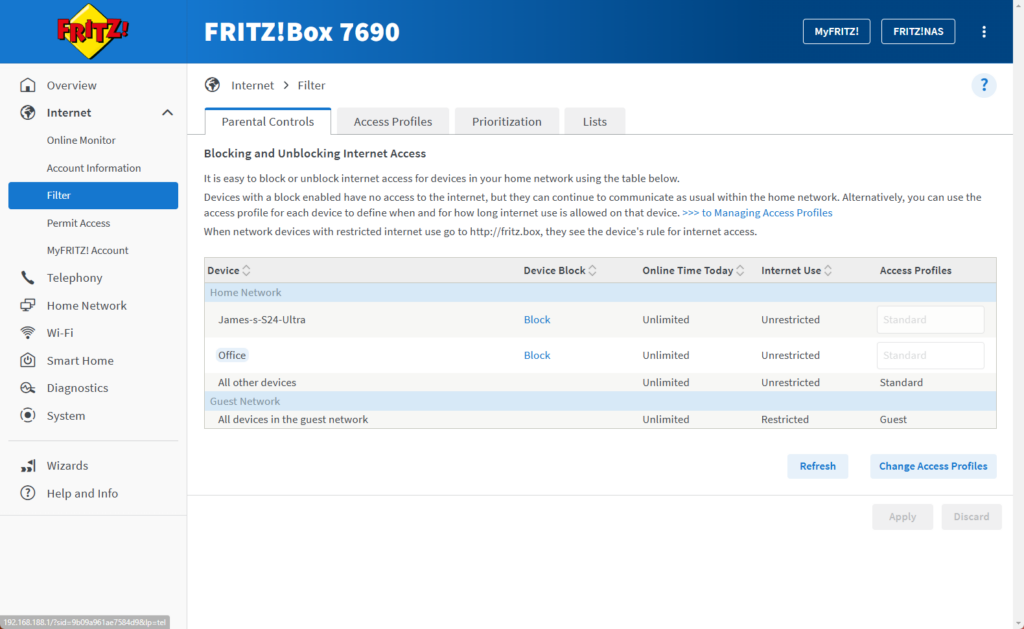
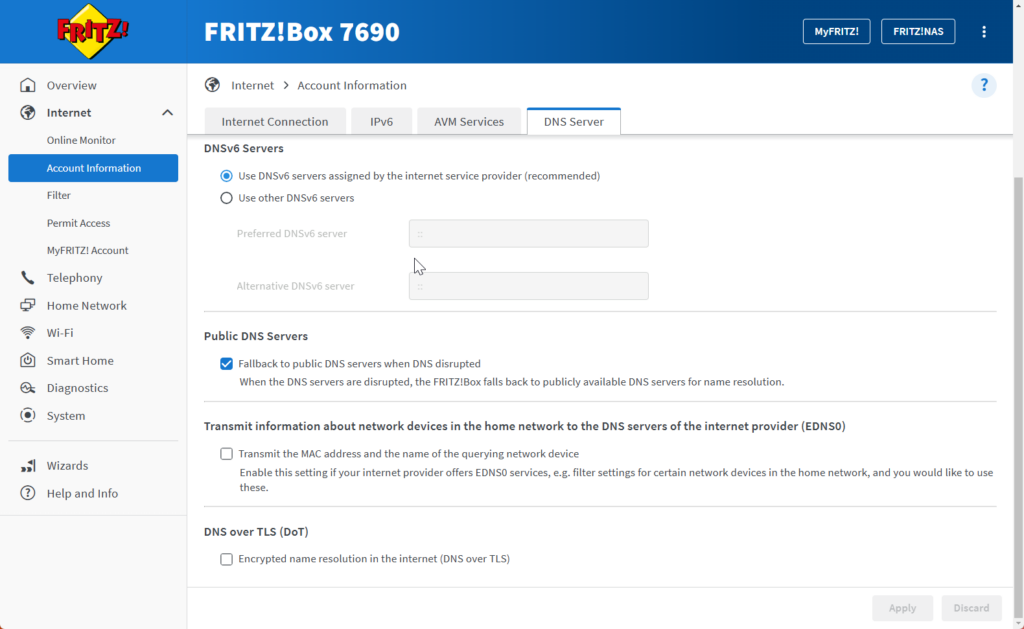
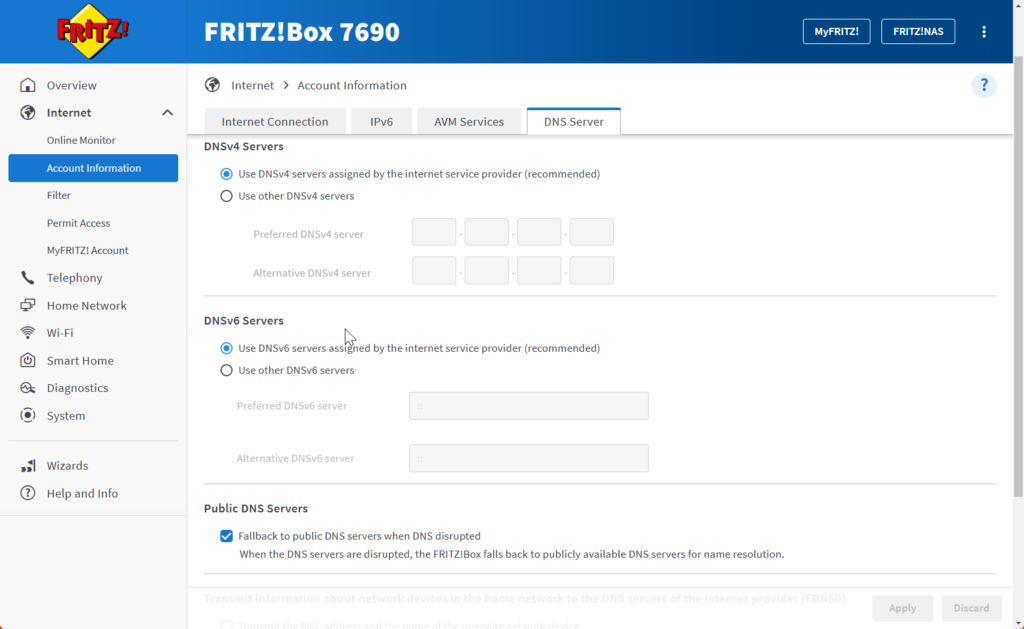
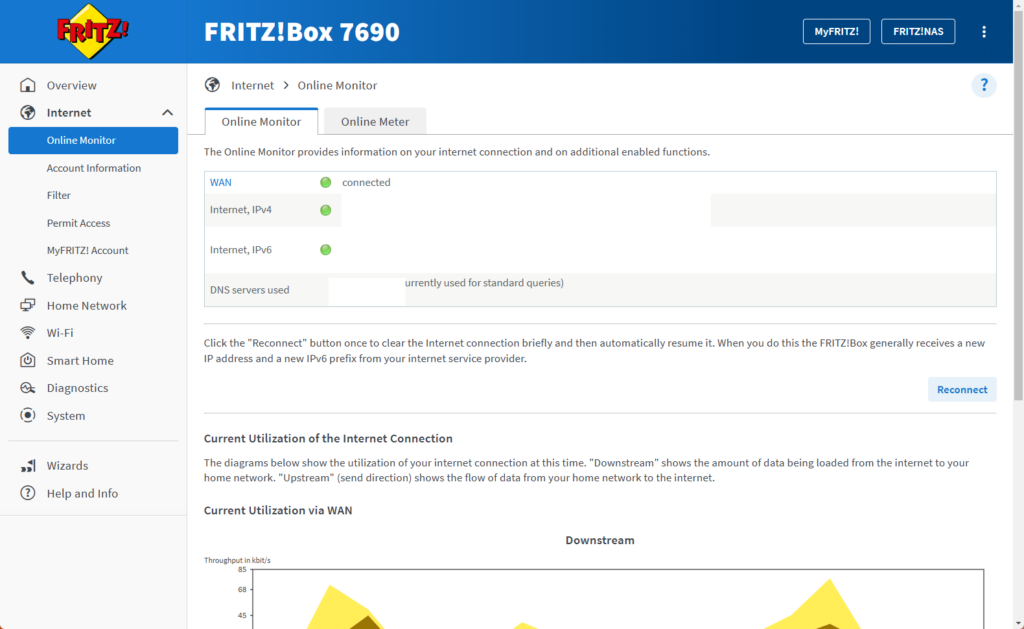
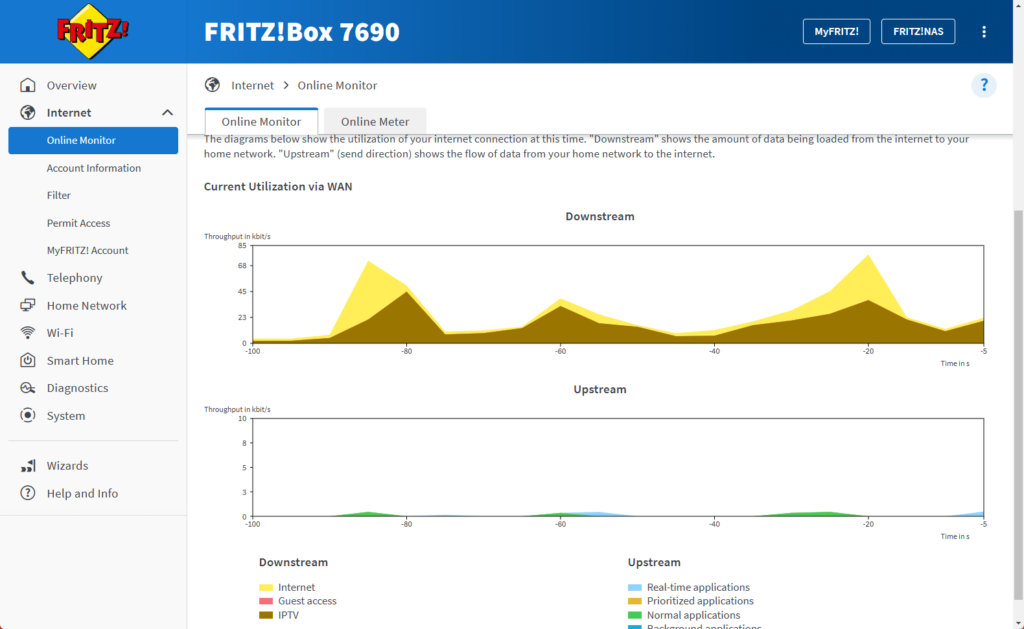
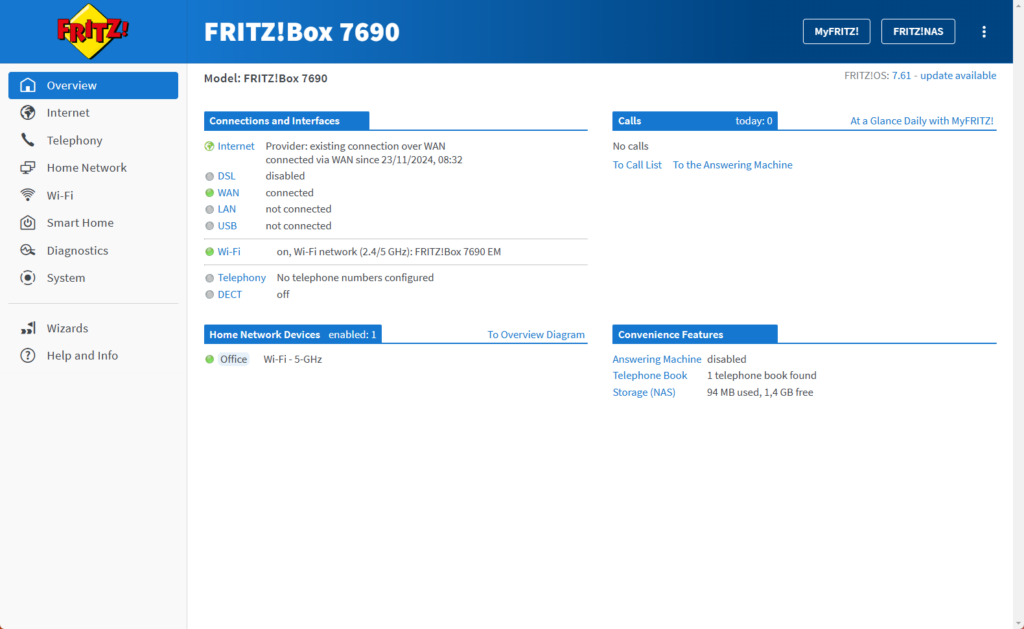
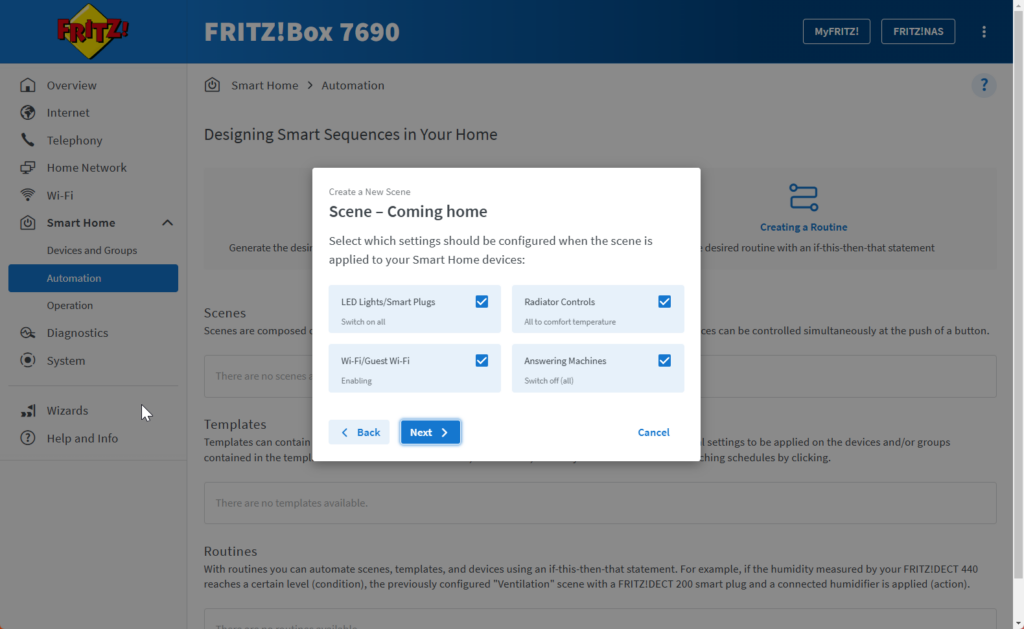
Wi-Fi Performance
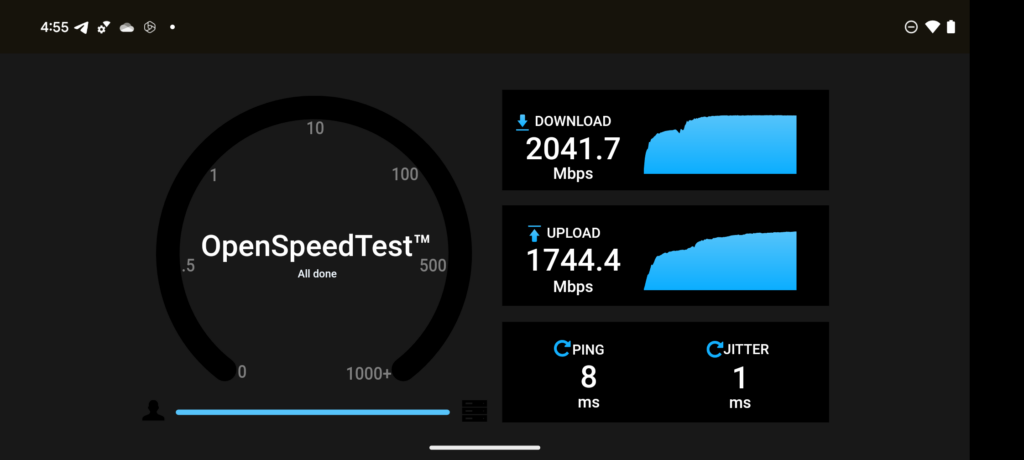
The FRITZ!Box 7690’s Wi-Fi 7 capabilities the main selling point of this router, offering significant improvements in speed and reliability compared to previous generations. In my testing, I found that the router delivers impressive performance with the 5 GHz band.
The 5GHz channel defaults to 160MHz. WiFi 7 can technically use 240MHz, but that can cause lots of problems with interference.
I used my desktop as the server. Then, my Samsung Galaxy S24 Ultra, Pixel 9 Pro XL and Honor Matebook 14 with the Qualcomm module out of the MSI Herald-BE NCM865 as my client devices.
With these, I was able to achieve a peak throughput of 2041 Mbits/sec in the same room. In comparison, with the AVM FRITZ!Box 7590 AX I was only able to achieve 865 Mbits/sec.
Repeated tests on different devices saw speeds consistently hit between 1500 and 2000Mbits/sec. This puts the performance similar to the Ubiquiti U7 Pro, Zyxel NWA130BE and Netgear Orbi RBE973, but a tough behind the Netgear RS600 and RS300.
Moving between rooms, the throughput dropped to around 1200 Mbits/sec in my TV room, directly downstairs, then 360 Mbits/sec in my front room, which is two rooms over from the TV room and through brick walls.
On the 2.4 GHz band, we recorded speeds of around 150 Mbit/s at close range, dropping to 75 Mbit/s at longer distances, similar to most routers I have. I generally only use this band for IoT devices, and I prefer to separate the bands (though MLO does change things a bit)
With Multi-Link Operation (MLO), which was introduced with WiFi 7, the client and router will allow compatible clients to maintain simultaneous connections on multiple frequency bands. The FRITZ!Box 7690 supports this in Enhanced Multi-Link Single Radio (EMLSR) mode, which can help reduce latency and improve connection stability. However, at the time of writing it is hard to tell if a device uses MLO. Both my Pixel and Samsung report that it connects to only 5GHz.
The lack of the 6 GHz band is disappointing, but this typically adds significantly to the cost.
Phone System
The FRITZ!Box 7690 continues AVM’s tradition of integrating a comprehensive phone system into their routers. This feature set is particularly valuable for users who rely on landline or VoIP (Voice over IP) services.
DECT Base Station
The built-in DECT base station supports up to six cordless handsets, allowing users to distribute phones throughout their home or office. This feature eliminates the need for separate DECT base stations, reducing clutter and simplifying the overall phone setup.
The DECT implementation supports HD voice for compatible handsets, providing crystal-clear audio quality for calls. It’s worth noting that while the router supports up to six DECT handsets, AVM recommends using their FRITZ!Fon models are available for the best experience and full-feature compatibility.
Analogue Phone Support
In addition to DECT, the FRITZ!Box 7690 includes two analogue phone ports (a/b ports). These allow users to connect traditional analogue phones, fax machines, or answering machines directly to the router. This backward compatibility is particularly useful for those who still rely on older telephone equipment or fax services.
VoIP and SIP Support
The router supports internet telephony through VoIP protocols, including SIP (Session Initiation Protocol). This allows users to set up and manage multiple VoIP accounts, potentially reducing phone costs by routing calls over the internet instead of traditional phone lines.
As I ditched my landline many years ago, I had to set up this router with my Yay SIP account, and it worked perfectly well. Not that I answer the phone.
Answering Machine and Voicemail
The FRITZ!Box 7690 includes five integrated answering machines, each of which can be configured separately. Messages can be accessed through connected phones, the router’s web interface, or forwarded to email as audio attachments. This flexibility ensures that users never miss important messages, regardless of their location.
Call Management Features
The router offers a range of call management features, including:
- Call blocking for unwanted numbers
- Call diversion rules
- Time-based routing
- Distinctive ring tones for different types of calls
These features provide users with fine-grained control over their incoming and outgoing calls, enhancing both convenience and privacy.
Zigbee Smart Home
AVM have had a smart home feature for a while now, and the FRITZ!Box 7690 seems to support smart homes better than previous generations.
This features Zigbee, and it is expected to be upgraded to support Matter in the coming months. It would have been nice if they supported Thread, but this is a much newer technology compared to Zigbee.
The router officially supports up to 40 Zigbee devices making it a versatile smart home controller. During testing, I found the setup process for Zigbee devices to be straightforward and user-friendly. The FRITZ!Box automatically detects compatible devices when they’re in pairing mode, allowing for quick and easy integration into your smart home ecosystem.
With this being Zigbee, one of the appealing features is the ability to control devices from different manufacturers within a single app. This interoperability is a significant advantage, as it allows users to mix and match devices without being locked into a single ecosystem. The FRITZ!App Smart Home provides a centralised control interface for all connected devices.
The router supports a wide range of Zigbee device types, including:
- Smart plugs
- LED bulbs
- Motion sensors
- Door/window sensors
- Thermostats
- Roller blind controls
However, it’s worth noting that while the FRITZ!Box 7690 can control most of these devices’ basic functions, but some advanced features may require the manufacturer’s dedicated app or hub. For example, energy consumption monitoring on certain smart plugs isn’t supported through the FRITZ!Box interface.
The automation capabilities are good. Users can create scenes, schedules, and routines to automate their smart home devices. For instance, you could set up a “Movie Night” scene that dims the lights, lowers the blinds, and turns on the TV with a single command.
Of course, there are better smart home hubs out there. Samsung SmartThings is arguably a better option and you can still buy it in the form of the Aeotec Smart Home Hub for £85. Homey Pro is far superior but that costs over £400 by itself. I am fond of Aqara buds but they are not completely open to third part devices.
Price and Alternative Options
As always with AVM, the FRITZ!Box 7690 isn’t officially sold in the UK. Sotel list it at £308.66 and this includes a UK plug. Conrad lists it at €325.
When I reviewed the AVM FRITZ!Box 7590 AX was available for €259 for the International and German models.
While there are a lot of WiFi 7 routers on the market, nothing really competes with the FRITZ!Box 7690 directly. I am not aware of any brand that still includes DSL modems in the router other than ISP-supplied devices. Similarly, no one else has DECT/SIP phone functionality and a Zigbee hub built in.
Affordable WiFi 7 routers available in the UK include:
- TP-Link Archer BE230, which is dual band with 2.5GbE and available or just £100 (£150 RRP)
- TP-Link Deco BE9300 which is a tri-band router that can then be combined with other BE9300 routers to form a mesh system. This is just £200 (£250 RRP).
- The TP-Link BE25 is a dual-band WiFi 7 mesh system for just £300 with 2 satellites and dual 2.5GbE ports
- Netgear has the dual band RS200 for £170 (£200 RRP)
The above prices were accurate on the 1st of December 2024 and all discounted for Black Friday/Cyber Monday.
Overall
While I moved my network to Ubuiqiti, I always had a soft spot for FRITZ!Box routers. I used the FRITZ!Box 7590 is longer than any other router I have owned. It was incredibly reliable, and I never felt the need to replace it, even though I had access to newer and better models. I only committed to replacing it when I moved to enterprise gear, initially with the EnGenius ESG510 and later with the Unifi Cloud Gateway Max.
The FRITZ!Box 7690 is similar to my experience with the previous FRITZ!Box routers I have reviewed. It is a feature-rich router with reliable performance.
Its range of features is also its downside. In the UK, most households don’t need a DSL modem, and the vast majority of people have moved away from landlines. These features add to the cost of the router, and at around £300, this is quite an expensive WiFi 7 router, considering it lacks the 6GHz band. You can pick routers from TP-Link, Netgear, and Asus for a lower price with superior WiFi and Ethernet.
Of course, if you can make the most of those features, then it is much more appealing. For people who are still on some form of DSL, then this router is easy to recommend as it will allow you to ditch whatever low-quality ISP modem/router has been supplied.
Similarly, a router like this would be a good choice for small businesses that will likely still have landlines.
The Zigbee functionality is a nice bonus, and it will be much better when they introduce Matter as well. Google and Amazon Eero have similar smart home functionality in their routers. But Google doesn’t yet have a WiFi 7 router, and the Eero Max 7 costs £450 (£600 RRP).
Overall, the FRITZ!Box 7690 is a superb feature-rich router, but its range of features makes it somewhat niche. If you can use these features, it is great value for money, but if you just want a basic WiFi 7 router, other options will likely be better value for money.
FRITZ!Box 7690 Wi-Fi 7 Router Review
Summary
The FRITZ!Box 7690 is a superb feature-rich router, but its range of features makes it somewhat niche.
Overall
85%-
Overall - 85%85%
Pros
- Integrated DSL modem
- DECT / SIP / VOIP phone system
- Zigbee Smart Home Hub
- Good WiFi 7 performance on 5GHz
Cons
- All the features make this more expensive than a basic WiFi router
- No 6GHz band
I am James, a UK-based tech enthusiast and the Editor and Owner of Mighty Gadget, which I’ve proudly run since 2007. Passionate about all things technology, my expertise spans from computers and networking to mobile, wearables, and smart home devices.
As a fitness fanatic who loves running and cycling, I also have a keen interest in fitness-related technology, and I take every opportunity to cover this niche on my blog. My diverse interests allow me to bring a unique perspective to tech blogging, merging lifestyle, fitness, and the latest tech trends.
In my academic pursuits, I earned a BSc in Information Systems Design from UCLAN, before advancing my learning with a Master’s Degree in Computing. This advanced study also included Cisco CCNA accreditation, further demonstrating my commitment to understanding and staying ahead of the technology curve.
I’m proud to share that Vuelio has consistently ranked Mighty Gadget as one of the top technology blogs in the UK. With my dedication to technology and drive to share my insights, I aim to continue providing my readers with engaging and informative content.

